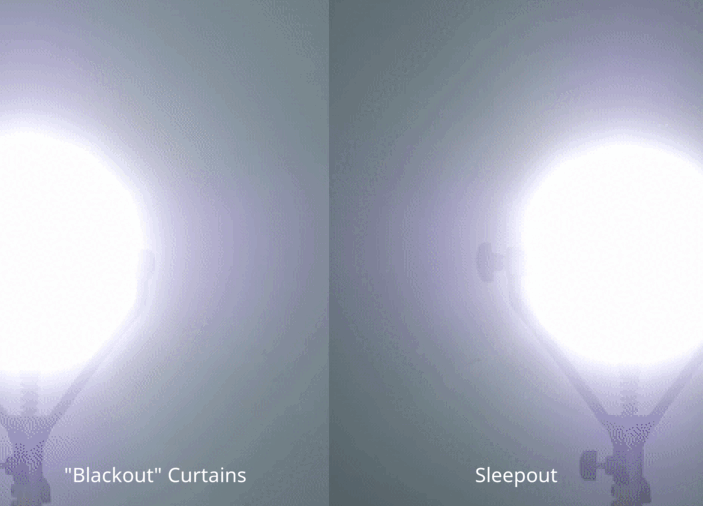When it comes to parenting, ensuring the safety and comfort of your baby is always a top priority. One common concern many parents face is how to determine if their baby is too hot during sleep. Babies are not as adept as adults at regulating their body temperature, making them more susceptible to overheating, which can be risky. In this comprehensive guide, we'll discuss the signs to watch for if your baby is getting too hot, how to properly dress them for sleep, and the role blackout curtains, like those from Sleepout Home Blackout Curtains, can play in maintaining an ideal sleep environment.
Signs Your Baby Might Be Overheating
It’s crucial to recognize the signs that indicate your baby might be overheating during their sleep. These signs include:
- Sweating: An obvious sign that your baby is too hot is sweat on their forehead, neck, or back.
- Flushed Skin: If your baby's skin appears red or flushed, this could be a signal that their body is trying to cool down.
- Rapid Breathing: Notice if your baby is breathing faster; this can be their body's attempt to release excess heat.
- Restlessness: Discomfort from heat might cause your baby to be more fidgety and restless during sleep.
- Heat Rash: Look out for tiny red bumps on the skin, which can indicate heat rash.
Why Overheating is Dangerous for Babies
Beyond discomfort, there are more serious risks associated with a baby overheating. Primarily, it increases the risk of SIDS (Sudden Infant Death Syndrome). Keeping your baby cool, particularly during sleep, is recommended by health professionals as a preventative measure against SIDS.
How to Dress Babies for Sleep
The right sleep attire can significantly help prevent overheating. Here are some tips:
- Choose the Right Material: Dress your baby in light, breathable fabrics like cotton. Avoid synthetic materials, which can trap heat.
- Consider the TOG rating: The TOG rating measures a fabric's thermal insulation. Use lower TOG values for warmer environments to keep your baby comfortable.
- Adapt to the Room Temperature: Monitor your baby’s sleep environment with a room thermometer and adjust their nightwear accordingly. A general rule is to dress your baby in one more layer than you would comfortably wear in the same environment.
Creating the Ideal Sleep Environment
Maintaining the right room temperature is key to avoiding overheating. The ideal temperature for a baby’s room is between 68 and 72 degrees Fahrenheit (20 to 22 degrees Celsius). However, factors like sunlight can affect room temperatures significantly.
One effective way to manage light and heat is by using blackout curtains. Sleepout Home Blackout Curtains not only darken the room to promote better sleep but also help insulate against heat, maintaining a more constant room temperature irrespective of external weather conditions.
Risks of Direct Sunlight and How Blackout Curtains Can Help
Direct sunlight through windows can dramatically increase the temperature of your baby’s sleep area. This not only risks overheating but also disrupts their natural sleep rhythms. Using blackout curtains like those from Sleepout can:
- Reduce Thermal Energy: They block the thermal energy that comes from direct sunlight, helping to regulate the room temperature.
- Block Light: By creating a dark environment, blackout curtains help signal to your baby that it’s time to sleep, crucial for setting a sleep schedule.
- Provide Noise Reduction: Many blackout curtains also help reduce noise pollution, thus creating a quieter environment conducive to sleep.
Final Tips on Preventing Overheating in Babies
Here are a few additional tips to ensure your baby stays cool and safe during sleep:
- Avoid Over-Bedding: Keep your baby’s crib free of heavy blankets and thick quilts that can trap heat.
- Stay Vigilant During Illness: Babies often run hotter when they’re sick. Be extra vigilant about their sleep conditions during illness.
- Use a Fan for Circulation: A ceiling or oscillating fan can help circulate air in the room, but make sure it does not blow directly on the baby.
- Hydrate: Ensure your baby is hydrated. Breastfed babies may need additional feeding during hot days.

Conclusion
Understanding and managing the risks associated with overheating can help ensure your baby has a safe, comfortable sleep. From choosing the proper sleepwear to maintaining an ideal room environment using tools like blackout curtains, every measure counts when it comes to the safety and comfort of your little one.
Remember to always observe your baby for signs of discomfort, and adapt their sleeping environment as necessary to mitigate risks and promote restful sleep. With these guidelines, you're well on your way to providing a safe, optimized sleep setting for your baby!

